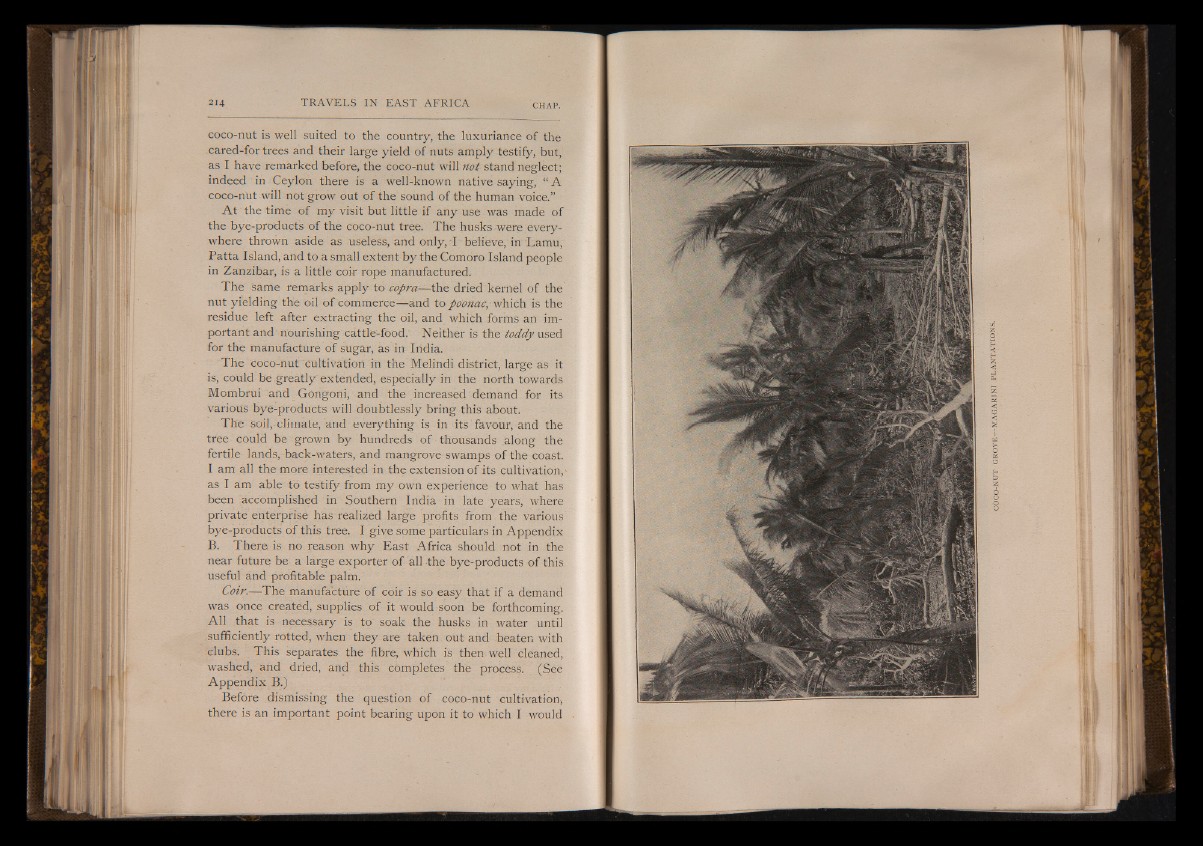
coco-nut is well suited to the country, the luxuriance of the
cared-for trees and their large yield of nuts amply testify, but,
as I have remarked before, the coco-nut will not stand neglect;
indeed in Ceylon there is a well-known native saying, “ A
coco-nut will not grow out of the sound of the human voice.”
A t the time of my visit but little if any use was made of
the bye-products of the coco-nut tree. The husks were everywhere
thrown aside as useless, and only, I believe, in Lamu,
Patta Island, and to a small extent by the Comoro Island people
in Zanzibar, is a little coir rope manufactured.
The same remarks apply to copra— the dried kernel of the
nut yielding the oil of commerce—and to poonac, which is the
residue left after extracting the oil, and which forms an important
and nourishing cattle-fbod. Neither is the toddy used
for the manufacture of sugar, as in India.
The Coco-nut cultivation in the Melindi district, large as it
is, could be greatly extended, especially in the north towards
Mombrui and Gongoni, and the increased demand for its
various bye-products will doubtlessly bring this about.
The Soil, climate, and everything is in its favour, and the
tree could be grown by hundreds of thousands along the
fertile lands, back-waters, and mangrove swamps of the coast.
I am all the more interested in the extension of its cultivation,
as I am able to testify from my own experience to what has
been accomplished in Southern India in late years, where
private enterprise has realized large profits from the various
bye-products of this tree. I give some particulars in Appendix
B. There is no reason why East Africa should not in the
near future be a large exporter of all the bye-products of this
useful and profitable palm.
Coir.— The manufacture of coir is so easy that if a demand
was once created, supplies of it would soon be forthcoming.
All that is necessary is to soak the husks in water until
sufficiently rotted, when they are taken out and beaten with
clubs. This separates the fibre, which is then well cleaned,
washed, and dried, and this completes the process. (See
Appendix B.)
Before dismissing the question of coco-nut cultivation,
there is an important point bearing upon it to which I would